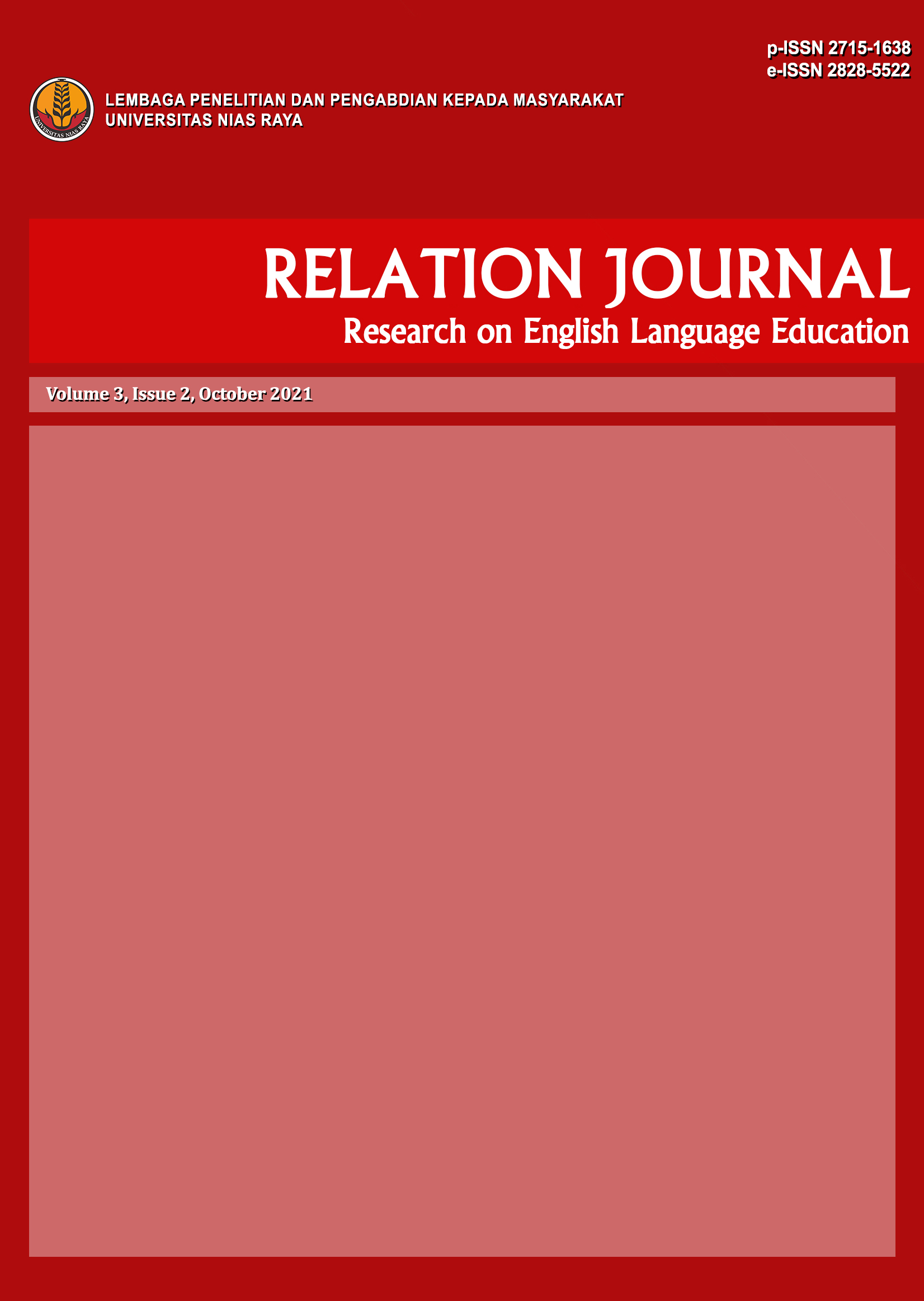ILLOCUTIONARY ACTS IN WONDER WOMAN MOVIE (2017)
Abstract
In this research, the writer discuss the using of illocutionary acts in the utterance of each character in Wonder Woman Movie. The aims of the research are to find out the types of illocutionary act and also to find out the dominant types of illocutionary act which deal with this research. There are five types of illocutionary act: assertives, directives, commisives, expressives, and declaratives. The writer used qualitative descriptive analysis method. The writer collected the data from the script of Wonder Woman movie, then identifying and classifying of illocutionary act, and describing the context related to this research. The writer used content analysis in analysing data according to speech act theory of Searle. The result showed that four types illocutionary acts in this research. Those were: Assertives with total amount 31 utterancess contained paradigm cases of statements, descriptions, and explanations; directives with total amount 10 utterances contained paradigm cases of request and commands; commissives with total amount 3 utterances contained paradigm cases of promises and pledge: expressives with total amount 3 utterances contained paradigm cases apologies and thanks. In this research assertives become as the dominant types of illocutionary acts used in Wonder Woman movie. But in this research declaratives was not found based on used research theory. This study is expected to give some useful for reader insights in understanding what illocutionary acts is.
References
Auerbach, C. F & Silverstein, L. B. 2013.Qualitative Data: An Introduction to Coding and Analysis. New York: New York University Press.
Austin, Jhon. L. 1955. How to do Things with words. London: Oxford University Press.
Colson, Hallinan, John, Macdonald, et al. 2016. The Movie Book.United State: DK Publishing.
Cruse, Alan. 2000. Meaning in Language: An Introduction to Semantics and Pragmatics. New York: Oxford University Press.
Cutting, Joan. 2002. Pragmatics and Discourse. London and New York: Routledge.
Griffiths, Patrick. 2006. Introduction to English Semantics and Pragmatics. Edinburgh University Press.
Hurford, James R., Heasley Brendan& Smith Michael B. 2007. Semantics: A Course Book, 2nd ed. New York: Cambridge University Press.
Kreidler, Charles W. 1998. Introducing English Semantics.Landon: Routledge.
Leech, G.N. 1983. Principles of Pragmatics. New York: Longman.
Letwin, David., Stockdale Joe & Stockdale Robin. 2008. The Architecture of Drama: Plot, Character, Theme, Genre and Style. United States of America: Scarecrow Press, Inc.,STYLE PLOT, CHARACTER
Levinson. 1983. Pragmatics. New York: Press Syndicate of the University of Cambridge.
Lincoln, Y. S. &Gube, E. G. 2013.The ConstructivistCredo.USA: Left Coast Press.
Mey, Jacob. L. 2001. Pragmatics: An Introduction.2nd ed. Australia: Oxford OX4 IJF.
Searle, Jhon. R. 1998. Mind, Language, and society: an philosophy in the Real World. New York: Basic Books
Thomas, J. 1995. Meaning In interaction: An Introduction to Pragmatics. USA: Routledge.
Yule, George. 1996. Pragmatics. New York: Oxford University Press.
Source from Articles:
Wardani, N. A. 2011. An Analysis of Illocutionary act in Prince of Persia: The Sand of Time Movie. State Islamic University “SYARIF HIDAYATULLAH”.
Wibawanty, D. T. 2017. An Analysis of Illocutionary acts in Divergent Movie script. State Institute Of Islamic Studies “IAIN PONOROGO”.
Fadihlah, N. 2020. An Analysis of Illocutionary Acts Performed by Alisha in EnglishClass101 YouTube channel.The State Islamic Institute of Surakarta.
Source from Internet:
https://bit.ly/2Sp4JjE, accessed on 25th February, 2021 at 14:00 P.M.
https://bit.ly/3fHloHl, accessed on 03th March, 2021at 10:00 A.M.
You are free to:
- Share — copy and redistribute the material in any medium or format for any purpose, even commercially.
- Adapt — remix, transform, and build upon the material for any purpose, even commercially.
- The licensor cannot revoke these freedoms as long as you follow the license terms.
Under the following terms:
- Attribution - You must give appropriate credit , provide a link to the license, and indicate if changes were made . You may do so in any reasonable manner, but not in any way that suggests the licensor endorses you or your use.
- No additional restrictions - You may not apply legal terms or technological measures that legally restrict others from doing anything the license permits.
Notices:
- You do not have to comply with the license for elements of the material in the public domain or where your use is permitted by an applicable exception or limitation.
- No warranties are given. The license may not give you all of the permissions necessary for your intended use. For example, other rights such as publicity, privacy, or moral rights may limit how you use the material.









